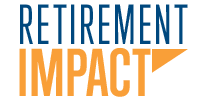It’s 9 a.m. and Janine (your employee) turns on her workstation computer to start her workday, yet the first phone call she takes is from a debt collector, and the first site she logs onto is her bank to see if she has overdrawn her checking account.
While this example is only an illustration, “Janine” has many real-world counterparts who devote work hours to money-related stressors.
Workers of all levels of education and income have financial problems.
Financial stress impacts workers’ lives personally and professionally. About 80 percent of employees who report significant financial stress say that they’re distracted by stress at work.[1]

Financially stressed employees can stress your company’s bottom line. According to a John Hancock Financial Stress Survey, employees stressed over finances cost their employers about $2k per employee.
If you are the CEO, HR manager, or a decision-maker in your company, a quick way to solve this would be to increase employees’ earnings and make their paychecks go further.
Unfortunately, with the current economic environment, very few businesses can afford to increase payroll.
A better option may be to offer financial coaching as a voluntary benefit, assisting employees to get more out of their paychecks and, effectively, giving them raises without increasing payroll by a cent.
Financial coaching could be the missing piece to your financial wellness programs. Access to financial wellness and education programs is steadily increasing, with over two-thirds of small to mega plans offering some form of program to help their employees manage their day-to-day finances[2]. However, research shows us that there is still more work to do.
What Is Financial Coaching?
Financial coaching focuses on a combination of intuitive technology and advisor led coaching with employees towards incrementally improving the financial position of your employees. Offered as a voluntary benefit, financial coaching sends employees a valuable message. It lets them know their employer cares about them and is prepared to extend a helping hand to those in need.
Employees often need support and encouragement to adhere to positive financial behaviors. By covering areas like debt reduction, credit building and budget counseling, employees may be able to:
- Save more and spend less
- Build an emergency fund
- Pay off consumer debts and student loans
- Prepare for vacations and holidays
- Contribute to an investment plan
For financial coaching to be successful, it needs to do more than just provide education. Coaching should result in your employees taking appropriate actions that lead to financial success.
Why Offer Financial Coaching?
Financial coaching for your employees isn’t just the right thing to do; it makes good business sense.
You may benefit from a more focused, engaged, and productive workforce when employees aren’t distracted by financial worries.
According to the 2019 Employer Guide to Financial Wellness by SalaryFinance.com, financially stable employees can complete daily tasks 6 times faster than financially stressed employees.
Improving your employees’ financial wellness can lead to lower turnover rates and reduced absenteeism while increasing employee satisfaction and improving your brand.
Covid-19
Americans are dealing with high levels of financial stress, and Covid is partly to blame.
Covid has turned the lives of many people upside down. Employers have started recognizing the value of adding financial coaching to their employee benefits packages.
They not only do this to attract and retain the best talent but also to support their employees in attaining their personal goals, in effect, turning them into loyal, long-term staff members.
Financial Lives are More Complex
35 percent of Americans report losing sleep to financial stress. One-quarter of the 35 percent of Americans losing sleep experience symptoms such as broken sleep, insomnia and fatigue on waking. [3]
There are a lot of health factors that can affect employee workforce productivity, which is why implementing financial coaching into your HR strategy can help.
Financial coaching can help employees find balance and control over their finances, now and in the future. But financial education alone is not going to change financial behaviors.
You need a solution that goes beyond static education. You must change your behavior in order to improve your financial health.
Americans have a financial literacy problem
It’s no secret that Americans struggle with their personal finances. But there’s a solution to every problem, and in this case, it may be financial coaching.
According to a study by Enrich, employees who participate in their financial wellness programs show positive financial behaviour changes.
- 10 percent contributed enough to the 401(k) to get the employer match
- 15 percent contributed to their retirement plan
- 27 percent created an emergency fund with 3-6 months of saving
- 28 percent pay off their credit card balance each month
- 32 percent feel they’re on track with their financial goals
As you see, financial coaching will empower your employees with insight and accountability towards permanently improving their financial health and mindset.
Meeting Your Employees Where They Are
To keep up with today’s interconnected world and better serve their clients, more and more financial coaches are leveraging technology.
Technology has significantly impacted financial coaching. It’s an easy way for financial coaches to meet the evolving needs of their clients and develop deeper relationships with them. It’s now possible to move employees along at their pace and then be available for consultation as needed.
An integrated platform creates a clearer path for goals-based planning and allows for more collaboration with plan participants.
Maximizing ROI
- Financial coaching is an inexpensive benefit
As an employer, you are already investing in your employees. Incremental costs associated with a robust technology platform coupled with one-on-one coaching consultations could cost less than $100 per employee annually[4], which makes coaching one of the least expensive benefits you could offer your employees.
- Trackable and reportable at the employer level
To help you recognize what troubles your employees are facing and the progress they are making, a financial coach will provide aggregated reports.
These insights serve as means that strives to keep your employees focused on work by minimizing their stress and the basis for future conversations about maximizing involvement in your company’s benefits.
- Getting employees to retire on time reduces health care costs over time
Many surveys show that finances are the leading cause of stress for working Americans.
While increased heart rates and sweaty palms might be symptoms of situational stress, the effects of chronic stress range from increased fatigue to heightened irritability and inability to concentrate.
A financial coach can help your workforce work towards getting their finances in order and retire early. The sooner your employees retire, the more time they’ll have to check items off their retirement bucket list.
Choosing the Right Provider
There are a lot of providers in the marketplace and more are entering every day. This means that you have a lot of choices in who you partner with for your coaching needs.
Some providers of financial coaching are offering technology programs and access free of charge. However, we have found that those platforms are mostly offered by financial services companies that want to sell potentially high cost loans and investment products that may or may not be in your employee’s best interests.
A true partner should be transparent with how they are paid and independent in their delivery. An independent advisor may have higher upfront costs but may be better for your employees in the long run.
Schedule a Call
At Retirement Impact, we’re in the business of changing financial lives.
Our approach to financial coaching focuses on engaging employees with a focus on guiding them towards action.
The goal is to help employees attain their objectives for every stage of their financial lives, whether it’s eliminating debt, saving for a car, buying a home or creating a safer retirement. Schedule a call today to see if coaching can be a complement to your financial wellness program.
[1] Source: Financial Health Network: https://finhealthnetwork.org/research/workplace-financial-health// Accessed August 2, 2021
[2] Source: Morningstar.com https://www.morningstar.com/news/business-wire/20210623005172/cogent-syndicated-plan-sponsors-use-of-financial-wellness-offerings-reaches-historical-high . accessed July 6, 2021
[3] Source: American Psychological Association, “Stress in America, 2020”, https://www.apa.org/news/press/releases/stress/2020/report-october, Accessed August 2, 2021
[4] Source: https://www.financialeducatorscouncil.org/financial-wellness-providers/, National Financial Educators Council, accessed on 7/21/2021.



